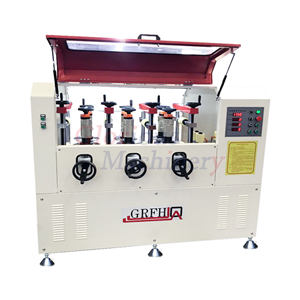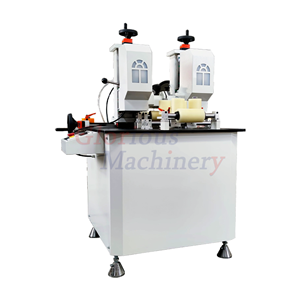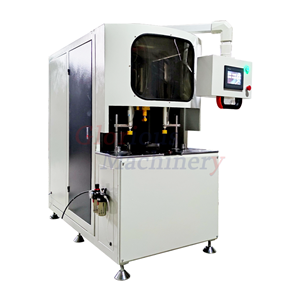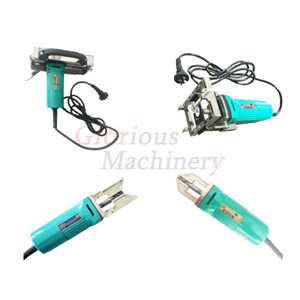- Home
- >
- News
- >
- Company News
- >
- Knowledge about plastic-steel doors and Windows
Knowledge about plastic-steel doors and Windows
I. What are plastic-steel doors and Windows?
** * Core concept: ** Plastic-steel doors and Windows are mainly made of polyvinyl chloride resin (PVC), with a certain proportion of stabilizers, colorants, fillers, ultraviolet absorbers, etc. They are extruded into profiles and then made into door and window frames and sashes through cutting, welding or screwing.
The source of "steel" : The strength and rigidity of pure PVC profiles are insufficient to meet the load-bearing and wind pressure resistance requirements of doors and Windows. Therefore, reinforcing steel sections (steel liners) must be lined in the inner cavity of the profile for reinforcement. It is precisely this crucial inner steel structure that has given it the name "plastic steel". PVC doors and Windows without steel linings cannot be called true plastic-steel doors and Windows, and their performance will be greatly reduced.
** * Essence: ** Plastic-steel doors and Windows are a type of "plastic + steel" composite material doors and Windows, combining the advantages of both plastic and steel.
Ii. Main Components of Plastic-Steel Doors and Windows
1. **PVC profiles ** : They form the main frame and exterior surfaces of doors and Windows. Provide the performance basis such as weather resistance, color, heat insulation and sound insulation.
2. ** Reinforced steel (steel lining) : ** Embedded in the main cavity of the PVC profile. The main function is to provide strength and rigidity to ensure that doors and Windows can withstand their own weight, wind pressure, opening and closing forces, etc. The thickness and specification of the steel lining (such as 1.2mm, 1.5mm, 2.0mm) directly affect the wind pressure resistance grade and overall stability of the doors and Windows. It must be hot-dip galvanized anti-rust steel.
3. ** Hardware: ** Including handles (handles), hinges (hinges), actuators, lock points, lock seats, etc. Be responsible for the opening, closing and locking functions of doors and Windows. High-quality hardware is the key to the service life and smooth operation of doors and Windows.
4. ** Seals: ** Mainly ** sealing strips ** (such as ethylene propylene diene monomer (EPDM) rubber), which are installed between the frame and the sash as well as between the glass and the pressure strips. Its functions are sealing, waterproofing, soundproofing and dustproofing. The quality and design of sealing strips directly affect the air tightness and water tightness of doors and Windows.
5. ** Glass ** : It occupies the majority of the area of doors and Windows. Common configurations include:
Single-layer glass (rarely used nowadays)
Double-layer insulating glass (the most common, such as 5+9A+5, 5+12A+5)
Three-layer insulating glass (higher thermal insulation and soundproofing)
Low-E glass (reduces heat radiation and enhances thermal insulation)
Laminated glass (safety, sound insulation)
6. ** Glass pressure strip ** : Used for fixing glass.
7. Drainage System: The drainage holes and grooves designed on the profiles are used to discharge rainwater that may seep in.
Iii. Core Advantages of Plastic-Steel Doors and Windows
1. ** Excellent thermal insulation performance: **
The thermal conductivity of PVC material itself is low (about 1/1250 that of aluminum).
The multi-chamber structure design effectively blocks heat transfer.
When combined with insulating glass, the K value (heat transfer coefficient) of the entire window can be made very low, far superior to that of ordinary aluminum alloy doors and Windows, approaching or reaching the level of broken bridge aluminum. It is one of the preferred doors and Windows for energy-saving buildings, especially suitable for cold and hot regions.
2. Excellent sound insulation performance
The multi-chamber structure and elastic sealing strips can effectively absorb and block sound waves.
When used in combination with insulating glass or laminated insulating glass, it can significantly reduce external noise (such as traffic and human voices).
3. Good air tightness and water tightness
The precise processing technology and high-quality sealing system (multi-seal design) can effectively prevent air infiltration and rainwater leakage.
4. Strong corrosion resistance
PVC profiles have excellent resistance to acids, alkalis, salts and other chemical substances as well as moist air, and are not prone to rust. It is highly suitable for coastal areas, humid regions and industrial zones with corrosive gases.
5. ** Appearance and Maintenance: **
** * Color stability: ** Full-body coloring or film coating, with a variety of colors that are not easy to fade (high-quality profiles).
** * Easy to clean: ** The surface is smooth and not prone to dust accumulation. When it gets dirty, just wipe it with clean water or neutral detergent.
** * Paint-free: ** Unlike wooden Windows, it does not require regular painting and maintenance.
6. ** Fire resistance ** : PVC itself is flame-retardant (self-extinguishing when removed from the fire source), which is superior to wood.
7. ** High cost performance ** : Under the same performance level (especially in terms of thermal insulation and sound insulation), plastic-steel doors and Windows are usually more cost-effective than thermal break aluminum alloy doors and Windows.
Iv. Limitations/Disadvantages of Plastic-Steel Doors and Windows
1. Strength and Rigidity: Despite the addition of steel linings, the overall strength and rigidity are still lower than those of high-quality aluminum alloy doors and Windows, especially large-sized ones, which have an upper limit in terms of wind pressure resistance. In areas with extremely large openings or particularly high wind pressure, caution should be exercised when choosing or high-specification products should be selected.
2. Weather resistance and aging
When exposed to strong ultraviolet rays, high temperatures and severe cold for a long time, inferior PVC profiles may experience discoloration (yellowing, graying), surface powdering and a decrease in gloss (high-quality profiles have added UV inhibitors and stabilizers, which can greatly delay this process).
Extreme temperature changes may cause slight alterations in the dimensions of profiles (thermal expansion and contraction), and expansion joints should be left during design and installation.
3. ** Recycled material issue ** : There are inferior profiles in the market made from recycled PVC (secondary materials), whose strength, color stability, weather resistance, and environmental friendliness are far inferior to those made from brand-new materials (virgin materials). When making a purchase, be careful to distinguish.
4. ** Appearance and Texture ** : Compared with high-end doors and Windows such as aluminum alloy and wood-clad aluminum, it has a relatively stronger plastic feel (although the film coating technology can simulate the effects of wood grain, etc.), and the high-end feel is slightly inferior.
5. ** Fire Resistance rating ** : PVC will burn and release toxic gases when exposed to fire (although it is flame-retardant, it is not non-combustible). Special attention should be paid in places with extremely high fire protection requirements.
6. ** Anti-corrosion of steel lining ** : If the quality of the steel lining is poor (such as not galvanized or insufficient galvanized layer) or the galvanized layer is damaged during processing and installation, the internal steel lining may rust and corrode, affecting its strength.
V. How to Select High-quality Plastic-Steel Doors and Windows
1. ** Check the profile: **
** * Brand and Virgin Materials: ** Select well-known brands (such as Conch, Shide, Zhongcai, LG Haojiaxi, Komeling, Vica, etc.) and ensure the use of brand-new PVC raw materials (virgin materials).
** * Wall thickness ** : The visible wall thickness of the main profile should be ≥2.5mm (as required by national standards). The thicker it is, the better the strength is usually.
** * Cavity and Structure ** : The multi-cavity design is more conducive to heat preservation and sound insulation.
** * Appearance ** : The surface should be smooth and flat with uniform color. Avoid impurities, scratches and depressions.
2. ** Check the steel lining: **
** * Must have steel linings: ** Confirm that all parts that need to bear force (frames, fans, mullions) have been equipped with steel linings as required.
** * Thickness and Anti-corrosion: ** The thickness of the steel liner should be at least 1.2mm, and preferably 1.5mm or more. It must be hot-dip galvanized steel lining. It can be tested by magnetic adsorption, or observed from the drainage hole or process hole.
3. Hardware inspection
** * Brand and Quality: ** Select well-known brand hardware (such as Noto, Sergiya, Gewu, Jianlang, Guoqiang, etc.). It feels heavy and the switch is smooth without any obstruction.
** * Load-bearing capacity and durability: ** Ensure that the hardware can withstand the weight of doors and Windows and their frequent opening and closing.
4. Resealing
** * Rubber strip material: ** Preferred ** Ethylene propylene diene monomer rubber **, which is resistant to aging and has good elasticity.
** * Number of sealing passes: ** At least two passes (between the frame and sash, between the glass and the pressure strip), three passes are even better. Check whether the rubber strips are continuous, elastic and firmly installed.
5. ** Select glass: **
** * Standard configuration: ** At least double-layer insulating glass (such as 5+12A+5).
** * Upgrade as needed ** For insulation, choose Low-E hollow; For sound insulation, choose hollow laminated or three-glass two-cavity. For safety, choose laminated rubber.
** * Inspection: ** The glass should be clean without scratches or rainbow patterns (for low-quality glass), and the insulating layer should be free of dust and moisture.
6. ** Check processing and installation: **
** * Processing accuracy: ** The profiles are cut straight, and the welding seams (or corner code connection points) are uniform, firm and clean. There is no obvious deformation as a whole.
** * Installation quality: ** Install horizontally and vertically, with uniform gaps, and fill with full and aesthetically pleasing foam and sealant. The hardware debugging is in place and the switches are smooth. "Three parts product, seven parts installation." Installation is of vital importance!
7. ** Request for Materials ** : Request to provide product qualification certificates, quality guarantee certificates, inspection reports of profiles and hardware, etc.
Vi. Maintenance and Care of Plastic-Steel Doors and Windows
1. ** Cleaning ** : Regularly clean the surface of profiles and glass with a soft cloth dipped in clean water or neutral detergent. Avoid using strong acids, strong alkalis or organic solvents (such as acetone, banana water), scouring powder or hard brushes to scrub, as this may damage the surface of the profiles and the rubber strips.
2. ** Hardware maintenance ** : Regularly check whether the hardware parts (hinges, hinges, handles, lock points, etc.) are loose, rusty or damaged. A small amount of lubricating oil (such as sewing machine oil) can be applied regularly to keep the rotating and sliding parts flexible. Avoid operating with wet hands, especially the handle.
3. ** Rubber strip maintenance ** : When cleaning, pay attention to protecting the sealing rubber strip. Check whether the rubber strips are aged, cracked, deformed or fallen off, and replace them in time to ensure the sealing performance.
4. ** Drainage holes ** : Regularly check if the drainage holes are blocked to ensure smooth drainage.
5. ** Switch operation ** : When opening or closing doors and Windows, apply moderate force. Do not force operation when encountering obstacles. Check and eliminate faults instead.
6. ** Avoid hitting with hard objects: ** Avoid hitting doors and Windows with hard objects.
Vii. Comparison of Main Features between Plastic-Steel Doors and Windows and Thermal Break Aluminum Alloy Doors and Windows
| Features | Plastic-Steel Doors and Windows | Broken Bridge Aluminum Alloy Doors and Windows |
| : - - - - - - - - - - - - - - - | : - - - - - - - - - - - - - - - - - - - - - - - - - - - | : - - - - - - - - - - - - - - - - - - - - - - - - - - - |
| Main Materials | PVC plastic + Internal reinforced steel lining | Aluminum alloy profiles + middle thermal break strip (broken bridge) |
| ** Thermal insulation ** | ** Optimal ** (with the lowest K value) | Excellent (requires good thermal break design) |
| Sound insulation | Excellent (multi-chamber structure + good sealing) | Best to best (Depending on the structure) |
| ** Strength/Rigidity | Good (Depending on the thickness of the steel lining) | ** Optimal |
| ** Weather resistance/Anti-aging **| Good (High-quality profiles are excellent, while inferior ones are prone to discoloration) | ** Superior (Metal properties) |
| ** Corrosion Resistance ** | ** Excellent ** (Plastic corrosion resistance) | Excellent (when the surface treatment is good) |
| ** Fire resistance ** | Good (Flame retardant but releases toxic gas when exposed to fire) | ** Excellent (Non-combustible metal) |
| ** Weight | Lighter | Heavier |
| ** Appearance Texture ** | Plastic feel (improved by lamination) | ** Strong metallic texture, good modern feel ** |
| ** Color Selection ** | Full-body color or film coating, more | Spray coating/electrophoresis/wood grain transfer printing, rich |
| ** Price (same performance)** | ** Usually lower ** (High cost performance) | Usually higher |
| Main Applications | Residences, environments with high requirements for thermal insulation and sound insulation | All kinds of buildings, especially emphasizing strength/appearance/fire prevention places |
## Summary
Plastic-steel doors and Windows, with their outstanding thermal insulation, sound insulation performance, good sealing, corrosion resistance and relatively high cost performance, occupy an important position in civil residences, especially in buildings with high requirements for energy conservation and comfort. Selecting high-quality profiles (virgin materials), steel linings of compliant thickness, brand-name hardware, appropriate glass configuration, and professional processing and installation are the keys to ensuring the long-term stable use of plastic-steel doors and Windows. When making a purchase, it is essential to be vigilant in identifying inferior products (such as those made from recycled materials or with substandard steel linings).
It is hoped that this detailed knowledge about plastic-steel doors and Windows can help you better understand and choose! If you have specific usage scenarios or questions, you can communicate further.






